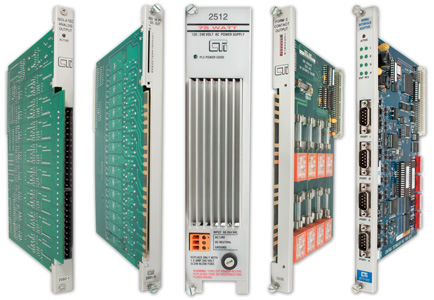Unlocking the Secrets of Variable Frequency Drives: Discover the Essential Components You Never Knew You Needed!
In today’s fast-paced industrial landscape, variable frequency drives (VFDs) have emerged as pivotal components in ensuring operational efficiency and energy conservation. These sophisticated devices allow for precise control of motor speed and torque, making them indispensable in various applications, from manufacturing to HVAC systems. However, to fully harness the benefits of VFDs, it is crucial to understand the various components that comprise these systems. Each part plays a vital role in the overall functionality and reliability of the drive, which directly impacts performance and maintenance requirements. This article will delve into the essential components of VFDs, illuminating their functions and importance in the world of industrial automation.

Overview of Variable Frequency Drives
A variable frequency drive is an electronic device that controls the speed and torque of an electric motor by varying the frequency and voltage of its power supply. By adjusting these parameters, VFDs help in optimizing the performance of motors, leading to significant energy savings and improved operational efficiency. For instance, in a manufacturing setting, using a VFD can reduce energy consumption by regulating the motor speed to match the load requirements, rather than running at full speed continuously. This not only minimizes wear and tear on the motor but also extends its lifespan, allowing for smoother operations and reduced maintenance costs.
Key Components of Variable Frequency Drives
Understanding the main components of VFDs is essential for anyone involved in their operation or maintenance. Each component serves a specific function that is critical to the overall performance of the drive. The key components include the rectifier, DC bus, inverter, control unit, and cooling system. Together, these elements work in harmony to ensure that the VFD operates efficiently and reliably. Personal experience shared by a friend who works in industrial maintenance highlighted the importance of each component. He often noted how a small issue in one part could lead to significant downtime, emphasizing the need for a comprehensive understanding of these systems.
1. Rectifier
The rectifier is the first component in a VFD and plays a crucial role in converting alternating current (AC) power from the electrical grid into direct current (DC) power. This conversion is essential, as the subsequent components require DC power to function effectively. The rectifier typically consists of diodes or thyristors, which allow current to flow in one direction while blocking it in the opposite direction. The quality of the rectification process directly affects the performance of the entire system, as any inefficiencies here can lead to voltage fluctuations and decreased motor performance.
2. DC Bus
The DC bus acts as a conduit for the direct current that the rectifier produces. It serves two primary functions: storing energy and providing a stable voltage level for the inverter. The DC bus typically includes capacitors that help smooth out fluctuations in voltage, ensuring that the inverter receives a consistent power supply. This stabilization is vital for the inverter to operate efficiently and maintain the desired motor speed and torque.
3. Inverter
The inverter is arguably the most critical component of a VFD, as it converts the DC power back into variable AC power. This conversion process is accomplished through pulse width modulation (PWM), which adjusts the width of the pulses in the AC signal to control the effective voltage and frequency supplied to the motor. By manipulating these parameters, the inverter can fine-tune the motor's speed and torque, allowing for precise control in various applications. A well-functioning inverter is essential for achieving the energy savings and operational efficiency that VFDs are known for.
4. Control Unit
The control unit serves as the brain of the VFD, managing its operation and ensuring that all components work together seamlessly. This unit integrates various sensors and provides a user interface for operators to set parameters such as speed, torque, and operational modes. A robust control unit allows for real-time monitoring and adjustments, helping to maintain optimal performance and respond to any changes in operational demands. Personal anecdotes from colleagues in the field often highlight instances where user-friendly control interfaces have made troubleshooting and adjustments significantly easier.
5. Cooling System
Every VFD requires a cooling system to maintain optimal operating temperatures. Overheating can lead to component failures and reduced efficiency, so effective cooling is essential for reliability. Cooling systems can vary from simple heat sinks to more complex liquid cooling solutions, depending on the size and application of the VFD. Ensuring that the cooling system is functioning correctly can prevent many potential issues and extend the lifespan of the drive, as I learned from a friend's experience in a manufacturing plant where they faced frequent breakdowns due to inadequate cooling.
Importance of Each Component in VFD Performance
Each component of a variable frequency drive plays a crucial role in its overall efficiency, reliability, and longevity. The rectifier sets the stage for energy conversion, while the DC bus ensures stable power supply, and the inverter delivers the necessary variable output to the motor. The control unit orchestrates the operation, and the cooling system safeguards against overheating. A failure in any of these components can lead to significant operational issues, including energy inefficiencies and increased downtime. Understanding these components not only aids in effective maintenance but also empowers operators to troubleshoot issues swiftly, thus ensuring continuous and reliable operation.
Summary of VFD Component Importance
In summary, the components of variable frequency drives are integral to their operation and performance in industrial settings. Understanding the roles of the rectifier, DC bus, inverter, control unit, and cooling system is essential for anyone working with VFDs. This knowledge not only facilitates effective operation and maintenance but also enables users to maximize the benefits of these powerful devices. As technology continues to evolve, further exploration and learning about VFD technologies will undoubtedly yield even greater efficiencies and innovations in industrial applications.








